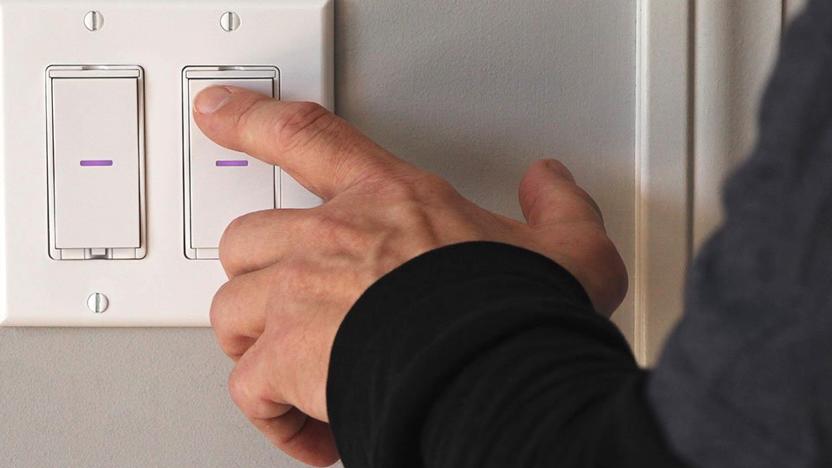dimmerswitch
Latest

iDevice dimmer switches work with Alexa, Google Assistant and Siri
Using your voice to control things around your home is one of the cooler aspects of the future we live in. But, unless you have the right phone or smart speaker, that functionality can be crippled or nonexistent. Platform-agnostic devices for smart homes are all too rare, which is why iDevices' dimmer switch is so intriguing. The company's hardware works with Alexa, Google Assistant and Siri right out of the box. No, I never thought I'd say a dimmer switch would be interesting either, but here we are.

WeMo's smart home upgrades include a dimmer switch
Belkin is continuing its quest to cover virtually every aspect of your smart home. Its WeMo brand is kicking off CES with two devices that promise to be handy even for those devices that don't have any intelligence of their own. The centerpiece is the WeMo Dimmer, a light switch that promises more than just extra control over your brightness levels. You can calibrate it to work with any light bulb type, for instance -- you'll get the best possible range of light levels without worrying about flickering or noise. There's also nighttime mode scheduling to avoid blinding yourself, long-presses to control other WeMo devices and an away mode to pretend you aren't on vacation.

Insert Coin: Luminode dimmer switch runs on a mesh network, learns to light up our lives (video)
In Insert Coin, we look at an exciting new tech project that requires funding before it can hit production. If you'd like to pitch a project, please send us a tip with "Insert Coin" as the subject line. Just a simple light switch, you say? Look closer. Think Automatic's Luminode dimmer switch hides both a processor and a mesh network connection that lets every switch in the home coordinate with each other. A multi-tap system makes it possible to link multiple lights together without extra wiring or complex programming, but that's just the start: it's possible to create "scenes" of predefined lighting levels and, with a USB adapter, hook up to home automation systems (including Think Automatic's own) that can learn usage habits, track energy consumption or simply let us control the array with our smartphones. The platform uses raw XML to communicate and already talks to GE, Insteon and Stargate hardware -- all without requiring a huge grid of buttons or displays. Development of the Luminode is very nearly done after six-plus years of work in Seattle. The hardware is fundamentally ready and just needs the Kickstarter project to finish its FCC and UL testing along with the obligatory mass production. The hope is to start delivering switches in January as well as integrate more closely with non-lighting elements in the future. Pledge levels are dictated almost exclusively by volume: $130 is what it takes to get a basic two-switch kit, $260 will add the USB adapter along with an extra switch, and successive levels scale all the way up to a 50-switch, $3,000 kit for large homes. Think Automatic has a relatively low $35,000 threshold to meet its Kickstarter funding, but it only has 13 days left to go. If you like the idea of advanced lighting that doesn't require an advanced appreciation of the user manual to understand, now's a good time to click the source link and make it happen.

